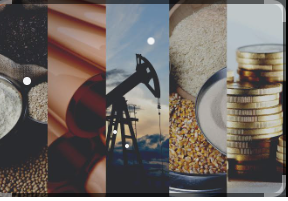The world has faced unprecedented challenges due to the coronavirus pandemic, and one of the most affected areas is the commodities market. As economies grappled with lockdowns, supply chain disruptions, and fluctuating demand, many raw materials have felt the impact in profound ways. From energy resources like oil to essential agricultural products, COVID-19 has reshaped how we view and interact with these vital assets. Understanding which commodities were hit hardest can provide valuable insights for investors looking to navigate this turbulent landscape. Join us as we delve into the effects of coronavirus on various commodities and explore opportunities that may arise from this crisis.
Overview of Major Commodities Affected by Coronavirus
The coronavirus pandemic https://finanzasdomesticas.com/materias-primas-afectadas-por-el-coronavirus has left a significant mark on global commodities. Various sectors have experienced sharp declines in demand and disruptions in supply chains.
Oil, one of the most affected commodities, saw prices plummet as travel restrictions and lockdowns reduced consumption drastically. The once-bustling market faced unprecedented challenges.
Precious metals like gold and silver also navigated turbulent waters. While some investors flocked to safe havens during uncertainty, industrial demand dipped due to factory closures and decreased manufacturing activities.
Agricultural products weren’t immune either. Supply chain bottlenecks hindered distribution, impacting everything from grains to livestock. Farmers faced tough decisions about planting seasons amidst fluctuating markets.
Understanding these dynamics is key for anyone looking at investments or simply trying to stay informed about the economic landscape shaped by this pandemic’s ripple effects on various essential goods.
Oil Market and its Current State due to Coronavirus
The oil market https://finanzasdomesticas.com/materias-primas-afectadas-por-el-coronavirus has undergone significant turbulence due to the COVID-19 pandemic. With lockdowns and travel restrictions globally, demand for oil plummeted overnight.
Crude prices fell sharply as production continued yet consumption dwindled. Storage facilities reached their limits, forcing producers to rethink strategies. Major oil companies scaled back investments and cut operational costs drastically.
On the flip side, some countries saw an opportunity amidst chaos. They capitalized on low prices to stockpile reserves while waiting for a recovery in demand.
As economies gradually recover, the landscape of the oil market remains uncertain. Shifts towards renewable energy sources may reshape long-term prospects. Meanwhile, supply chain disruptions continue to challenge traditional methods of distribution and transportation.
Investors are now watching closely for signs of stabilization or further dips in pricing amid ongoing global challenges related to public health and economy.
Effects on Precious Metals such as Gold and Silver
The impact of the coronavirus pandemic https://finanzasdomesticas.com/materias-primas-afectadas-por-el-coronavirus on precious metals like gold and silver has been significant. Investors often flock to these assets during times of crisis, seeking stability amidst economic turmoil.
Gold, traditionally viewed as a safe haven, saw prices surge as uncertainty gripped global markets. The demand for physical gold increased sharply, leading to supply chain disruptions. Mints struggled to keep up with orders while refining operations faced delays.
Silver also experienced volatility but in a different light. Industrial demand took a hit due to factory shutdowns worldwide. However, its dual role—both an investment asset and industrial metal—created fluctuations that investors monitored closely.
As economies begin to reopen, the future trajectory of these precious metals remains uncertain yet intriguing. Market dynamics continue shifting depending on economic recovery rates and investor sentiment surrounding inflation fears.
Agricultural Commodities and the Coronavirus Crisis
The coronavirus crisis https://finanzasdomesticas.com/materias-primas-afectadas-por-el-coronavirus has significantly impacted agricultural commodities. Supply chains faced unprecedented disruptions, causing delays in production and distribution.
Farmers struggled to find labor as lockdowns restricted movement. This led to crop losses and a surplus of unharvested produce. Many markets saw fluctuating prices, affecting both growers and consumers.
Additionally, demand patterns shifted dramatically. With restaurants closing or operating at reduced capacity, the need for certain crops declined sharply, while others surged due to increased home cooking.
Trade restrictions further complicated the situation. Export bans on essential goods left many countries scrambling to secure food supplies.
Adapting quickly became crucial for farmers trying to navigate this volatile landscape. Innovative solutions emerged as some turned towards direct-to-consumer sales models through online platforms or local delivery services. The resilience displayed by agricultural sectors highlights just how vital they are during crises like these.
Strategies for Investing in Commodities During a Pandemic
Investing in commodities during a pandemic requires a strategic approach. First, diversification is key. By spreading investments across various sectors—like energy, metals, and agriculture—you can mitigate risks associated with market volatility.
Next, consider the use of Exchange-Traded Funds (ETFs). They provide exposure to commodity markets without the need for direct ownership. This flexibility allows you to react quickly to changing conditions.
Staying informed is crucial. Keep an eye on global news and economic indicators that affect supply chains and demand levels. Awareness of these factors can guide timely investment decisions.
Think long-term. While short-term fluctuations are common during crises, focusing on fundamental value may yield better returns as the market stabilizes post-pandemic. Adaptability will be your greatest asset in navigating this uncertain landscape.
Conclusion: The Future of Commodities in a Post-Coronavirus World
The pandemic has reshaped the commodities landscape in unprecedented ways. As economies begin to recover, various factors will influence commodity prices and availability.
Demand patterns have shifted significantly; consumers are more conscious of their purchasing decisions. This may create lasting changes in markets for oil, precious metals, and agricultural products.
Investors should remain vigilant as countries navigate recovery strategies. The global supply chain remains vulnerable, so fluctuations are likely to continue. Additionally, geopolitical tensions can add another layer of complexity.
As we look ahead, innovation and sustainability will play pivotal roles. Companies that adapt quickly may thrive while others struggle to keep pace with evolving consumer preferences.
Understanding these dynamics is essential for anyone interested in commodities during this transitional period. Keeping an eye on trends will help investors make informed decisions moving forward.
